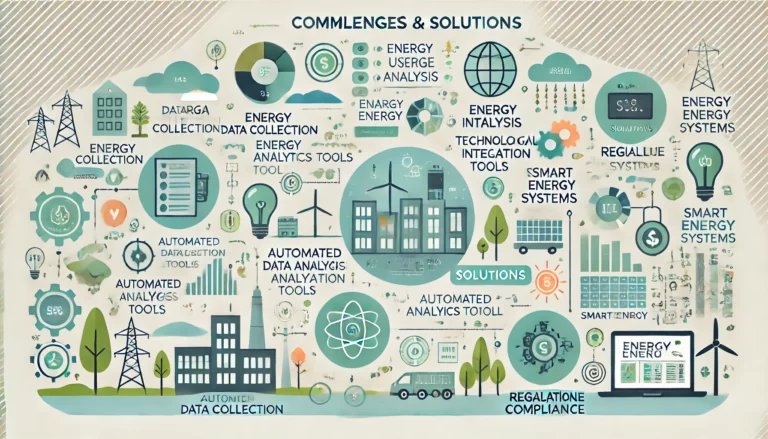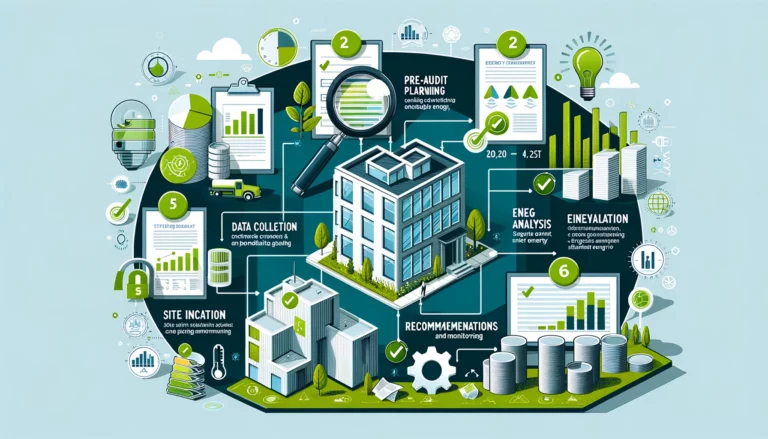In the quest for a sustainable future, energy auditing plays a pivotal role. It helps identify inefficiencies, optimize energy consumption, and reduce costs. However, traditional methods of energy auditing can be time-consuming and prone to errors. Enter the world of advanced tools and software designed to make energy auditing more efficient, accurate, and comprehensive. In this article, we’ll explore some of the most effective tools and software for energy auditing in the sustainable energy sector. We will provide insights and examples to help you understand and utilize these resources effectively.
The Importance of Energy Auditing
Before diving into the tools and software, it’s crucial to understand why energy auditing is essential. Energy audits help in:
- Identifying areas of energy waste.
- Improving energy efficiency.
- Reducing operational costs.
- Ensuring compliance with energy regulations.
- Enhancing sustainability efforts.
Essential Tools and Software for Energy Auditing
1. Energy Management Systems (EMS)
Energy Management Systems are comprehensive platforms that integrate various energy data sources to provide a holistic view of energy consumption. They offer real-time monitoring, data analysis, and reporting capabilities, which are crucial for effective energy management.
Benefits of EMS
- Real-time data monitoring: Allows for immediate identification of inefficiencies.
- Automated reporting: Reduces the time and effort required for manual reporting.
- Integration with other systems: Enhances the overall efficiency of energy management.
2. Building Management Systems (BMS)
Building Management Systems are designed to control and monitor the building’s mechanical and electrical equipment such as ventilation, lighting, power systems, fire systems, and security systems. A BMS can significantly improve energy efficiency by automating the control of these systems based on occupancy and usage patterns.
Key Features of BMS
- Automated controls: Adjust lighting and HVAC systems based on occupancy.
- Energy usage tracking: Provides insights into energy consumption patterns.
- Predictive maintenance: Reduces downtime and maintenance costs by predicting equipment failures.
3. Energy Audit Software
Energy audit software simplifies the process of conducting energy audits by providing tools for data collection, analysis, and reporting. These software solutions can range from simple spreadsheets to sophisticated platforms with advanced analytics and reporting capabilities.
Popular Energy Audit Software
- RETScreen: A free software developed by Natural Resources Canada that helps in evaluating the energy performance of buildings and industrial facilities.
- ENERGY STAR Portfolio Manager: An online tool that allows you to track and assess energy and water consumption across your building portfolio.
- AuditPRO: A comprehensive energy audit software that offers customizable templates, automated data analysis, and detailed reporting.
4. Smart Meters and Sensors
Smart meters and sensors are crucial for real-time data collection and monitoring. These devices measure various parameters such as electricity, gas, water usage, and environmental conditions, providing accurate and timely data for energy audits.
Advantages of Smart Meters and Sensors
- Accurate data collection: Reduces errors associated with manual data entry.
- Real-time monitoring: Enables quick identification and correction of inefficiencies.
- Enhanced data granularity: Provides detailed insights into energy consumption patterns.
How to Choose the Right Tools and Software
Choosing the right tools and software for energy auditing can be challenging, given the wide range of options available. Here are some tips to help you make an informed decision:
Assess Your Needs
- Determine the scope of your energy audit: Are you auditing a single building, multiple facilities, or an entire industrial plant?
- Identify key parameters: What specific data do you need to collect and analyze?
Evaluate Features
- Ease of use: Ensure the software is user-friendly and does not require extensive training.
- Integration capabilities: Check if the tool can integrate with your existing systems.
- Scalability: Choose a solution that can grow with your needs.
Consider Costs
- Initial costs: Include software purchase, installation, and training.
- Ongoing costs: Consider subscription fees, maintenance, and support costs.
When it comes to effective energy auditing in sustainable energy, the integration of advanced tools and software is indispensable. Utilizing Energy Management Systems (EMS) and Building Management Systems (BMS) can streamline the audit process, ensuring real-time monitoring and automated controls. Incorporating energy audit software like RETScreen and ENERGY STAR Portfolio Manager, alongside intelligent meters and sensors, enhances data accuracy and granularity. By selecting the right combination of tools based on your specific needs, you can significantly improve energy efficiency, reduce operational costs, and achieve your sustainability goals. Effective energy auditing not only identifies areas of improvement but also paves the way for a greener, more sustainable future.
Conclusion
Incorporating advanced tools and software into your energy auditing process is essential for achieving optimal energy efficiency and sustainability. By leveraging Energy Management Systems, Building Management Systems, specialized energy audit software, and smart meters, you can conduct thorough and accurate energy audits. These tools not only streamline the auditing process but also provide valuable insights that can drive significant energy savings and sustainability improvements.
Remember, the key to effective energy auditing lies in understanding your specific needs, evaluating the features of available tools, and considering both initial and ongoing costs. With the right resources at your disposal, you can make informed decisions that will benefit both your organization and the environment.
Energy auditing is no longer a cumbersome task with these advanced tools and software at your disposal. Embrace these technologies to enhance your energy management strategies and contribute to a sustainable future.





